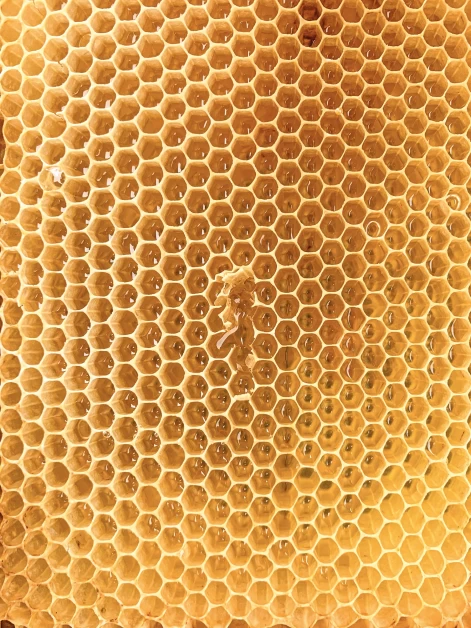Manuka honey has been used for centuries as a natural remedy for wound healing. The honey is believed to possess antibacterial and antioxidant properties that can speed up the healing process. In this article, we will explore the benefits of manuka honey for surgical wounds and how to use it effectively.
Introduction
Manuka honey is a type of honey produced in New Zealand. It is renowned for its unique properties that make it a valuable ingredient in various products, including wound dressings. Numerous studies have shown that manuka honey promotes healing by maintaining a moist wound environment and acting as an autolytic debriding agent. It also has a dual effect on the inflammatory response, which contributes to its rapid healing abilities.
Manuka honey has been proven effective in wound healing through several scientific studies. Its mechanisms of action include:
-
Maintaining a Moist Wound Environment: Manuka honey creates a barrier that keeps the wound hydrated, preventing it from drying out and promoting the growth of new tissue.
-
Autolytic Debridement: Manuka honey aids in the removal of dead tissue from the wound bed, allowing for faster healing and reducing the risk of infection.
-
Antibacterial Properties: Manuka honey has natural antibacterial properties that can help prevent and treat wound infections, including those caused by antibiotic-resistant bacteria.
-
Anti-inflammatory Effects: Manuka honey has been shown to reduce inflammation in wounds, which can speed up the healing process.
How to Use Manuka Honey on Surgical Wounds
When using manuka honey on a surgical wound, it is crucial to follow the instructions provided by your healthcare provider. Here are general guidelines for applying manuka honey to a wound:
-
Cleanse the Wound: Before applying manuka honey, ensure that the wound is thoroughly cleaned and free from any debris or foreign matter.
-
Apply the Honey: Use a clean applicator, such as a cotton tip or swab, to apply a thin layer of manuka honey directly onto the wound surface.
-
Cover the Wound: Once the honey is applied, cover the wound with a sterile dressing or bandage to protect it from external contaminants.
-
Change the Dressing: The frequency of dressing changes may vary depending on the amount of exudate (fluid drainage) from the wound. In general, it is recommended to change the dressing every 24 to 48 hours.
How Long Does Manuka Honey Take to Heal a Surgical Wound?
The healing time of a surgical wound treated with manuka honey can vary depending on various factors, including the size and severity of the wound, individual healing capabilities, and proper wound care. However, studies have shown that manuka honey can expedite the healing process.
A study conducted on partial thickness burns found that honey healed these wounds around 4 to 5 days faster than conventional dressings. Additionally, evidence suggests that manuka honey is more effective than antiseptic and gauze in healing infected surgical wounds.
To determine the specific healing time for your surgical wound, it is best to consult with your healthcare provider. They can assess the wound and provide personalized guidance based on your condition.
How Often Should You Change the Manuka Honey Dressing?
Medical honey dressings, such as those containing manuka honey, are typically recommended for the treatment of acute inflammatory wounds. The frequency of dressing changes depends on the amount of exudate present.
In general, medical honey dressings should be changed every 24 to 48 hours. However, this may vary based on the rate at which the honey is diluted by wound fluid. In the early stages of healing, more frequent dressing changes may be necessary.
It is essential to monitor the wound closely and consult with your healthcare provider for specific instructions on dressing change frequency.
Can You Put Manuka Honey Directly on an Open Wound?
Yes, manuka honey can be applied directly to an open wound. Honey has been used for centuries as a natural remedy for wounds and infections. Research has shown that honey is effective in clearing infection, healing infected surgical wounds, and preventing the progression of necrotizing fasciitis.
To apply manuka honey to an open wound:
-
Clean the Wound: Thoroughly cleanse the wound to remove any debris or contaminants.
-
Apply the Honey: Use a clean applicator to apply a thin layer of manuka honey directly onto the wound surface.
-
Cover the Wound: Once the honey is applied, cover the wound with a sterile dressing or bandage to protect it from external factors.
Remember to consult with your healthcare provider before using manuka honey on an open wound to ensure it is the appropriate treatment for your specific situation.
How to Wear a Wound Dressing with Manuka Honey
When using manuka honey as a wound dressing, it is important to follow proper application techniques. Here is a step-by-step guide on how to wear a wound dressing with manuka honey:
-
Prepare the Wound: Cleanse the wound thoroughly and remove any debris or foreign matter.
-
Apply the Honey: Using a clean applicator, apply a thin layer of manuka honey directly onto the wound surface.
-
Cover the Wound: Place a sterile dressing or bandage over the honey-coated wound to protect it from external contaminants.
-
Secure the Dressing: Use medical tape or adhesive strips to secure the dressing in place.
-
Monitor and Change the Dressing: Regularly monitor the wound for signs of infection or excessive drainage. Change the dressing as instructed by your healthcare provider or when it becomes saturated with wound fluid.
By following these steps, you can effectively utilize manuka honey as a wound dressing to promote healing.
Should Manuka Honey Be Refrigerated?
Manuka honey does not need to be refrigerated but should be stored in a cool, dark place. Refrigeration can cause honey to crystallize, which alters its texture but does not affect its healing properties.
It is important to note that manuka honey has antimicrobial activity against a wide range of bacteria. Its osmotic effect leads to cell lysis and bacterial death. Additionally, manuka honey has debriding properties that help reduce sources of bacteria and prevent further inflammatory reactions.
How Long Can You Leave Medihoney on a Wound?
Medihoney products are designed to remain on the wound for a 7-day period. However, the frequency of dressing changes may vary depending on the rate at which the honey is diluted by wound fluid. In the early stages of healing, it may be necessary to change the dressing daily.
If you experience any signs of infection, such as increased pain, swelling, redness, or discharge, it is crucial to seek medical attention promptly.
How to Apply Honey to a Deep Wound
When applying honey to a deep wound, it is essential to maintain proper wound care practices. Follow these steps to apply honey to a deep wound effectively:
-
Ensure Cleanliness: Wash your hands thoroughly and sterilize any applicators you will use.
-
Clean the Wound: Cleanse the wound gently with a sterile saline solution or as instructed by your healthcare provider.
-
Apply the Honey: Use a clean applicator to apply a thin layer of honey to the entire wound surface.
-
Cover the Wound: Place a clean, dry dressing over the honey-coated wound to protect it from external factors.
-
Monitor and Change the Dressing: Regularly monitor the wound for signs of infection or excessive drainage. Change the dressing as instructed by your healthcare provider or when necessary.
Proper wound care and monitoring are crucial when treating deep wounds with honey. Seek medical guidance for comprehensive wound management.
Can I Use Manuka Honey Every Day?
Yes, you can use manuka honey every day to enjoy its health benefits. Manuka honey is a natural antibacterial and antifungal agent that can help heal wounds, infections, and promote gut health. It is also known to boost the immune system.
To incorporate manuka honey into your daily routine, consume a spoonful of honey each day or add it to your diet in various ways. You can mix it into your breakfast cereal or oatmeal, use it as a natural sweetener in tea or coffee, or find other creative ways to include it in your meals.
Manuka honey is considered the gold standard in honey for its unique ability to promote healing. However, it is essential to consult with your healthcare provider before using manuka honey as a daily supplement to ensure it is suitable for your specific needs.
What Diseases Does Manuka Honey Cure?
Manuka honey has been studied for its potential therapeutic effects on various diseases and conditions. Some of the diseases and conditions that manuka honey has shown promise in treating include:
- Wound infections and healing
- Burns
- Gastrointestinal disorders, such as irritable bowel syndrome and gastric ulcers
- Periodontal disease
- Upper respiratory infections
While manuka honey has demonstrated positive effects in these areas, it is important to note that further research is still needed to fully understand its potential benefits. Consult with your healthcare provider for personalized guidance on using manuka honey in the treatment of specific diseases or conditions.
The Difference Between Medihoney and Manuka Honey
Medihoney is a brand of wound and burn gel that contains 100% Leptospermum (Manuka) honey. This honey is unique because it possesses antibacterial and bacterial-resistant properties, preventing the development of bacterial tolerance to its beneficial effects. Medihoney is an effective and safe treatment option for wounds and burns.
Manuka honey, on the other hand, refers to honey derived from the nectar of the Manuka bush. It contains beneficial properties that make it ideal for soothing and healing the skin. Manuka honey with a 10+ or higher rating is considered medical grade and therapeutic for the skin.
While both Medihoney and manuka honey have healing properties, they differ in terms of their specific formulations and intended uses. Consult with your healthcare provider or pharmacist to determine which product is most suitable for your needs.
How Many Times Should You Apply Manuka Honey?
The frequency of manuka honey application depends on the individual wound and the advice of your healthcare provider. In general, it is recommended to apply manuka honey to the wound once or twice daily, or as instructed by your healthcare provider.
When applying manuka honey, ensure that the wound is clean and free from debris before each application. Use a clean applicator to apply a thin layer of honey directly onto the wound surface, then cover it with a sterile dressing or bandage.
Regularly monitor the wound for any signs of infection or complications and consult with your healthcare provider for personalized guidance on the frequency of manuka honey application.
Conclusion
Manuka honey has long been recognized for its healing properties, making it an excellent choice for treating surgical wounds. Its antibacterial, anti-inflammatory, and wound-healing properties have been well-documented in scientific studies. By following proper wound care practices and consulting with your healthcare provider, you can effectively use manuka honey to promote healing and prevent infections in surgical wounds. Remember to adhere to your healthcare provider’s instructions and monitor the wound closely for any signs of complications.









